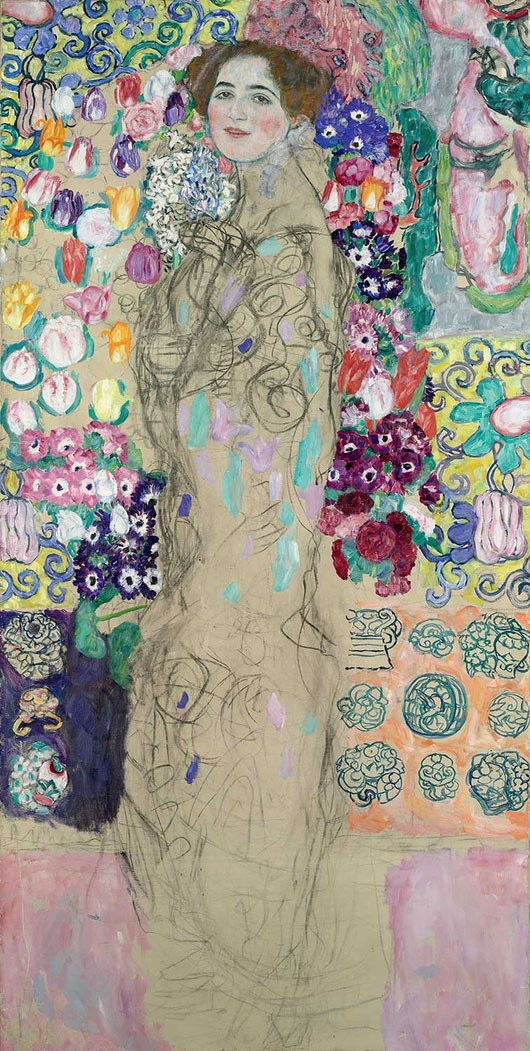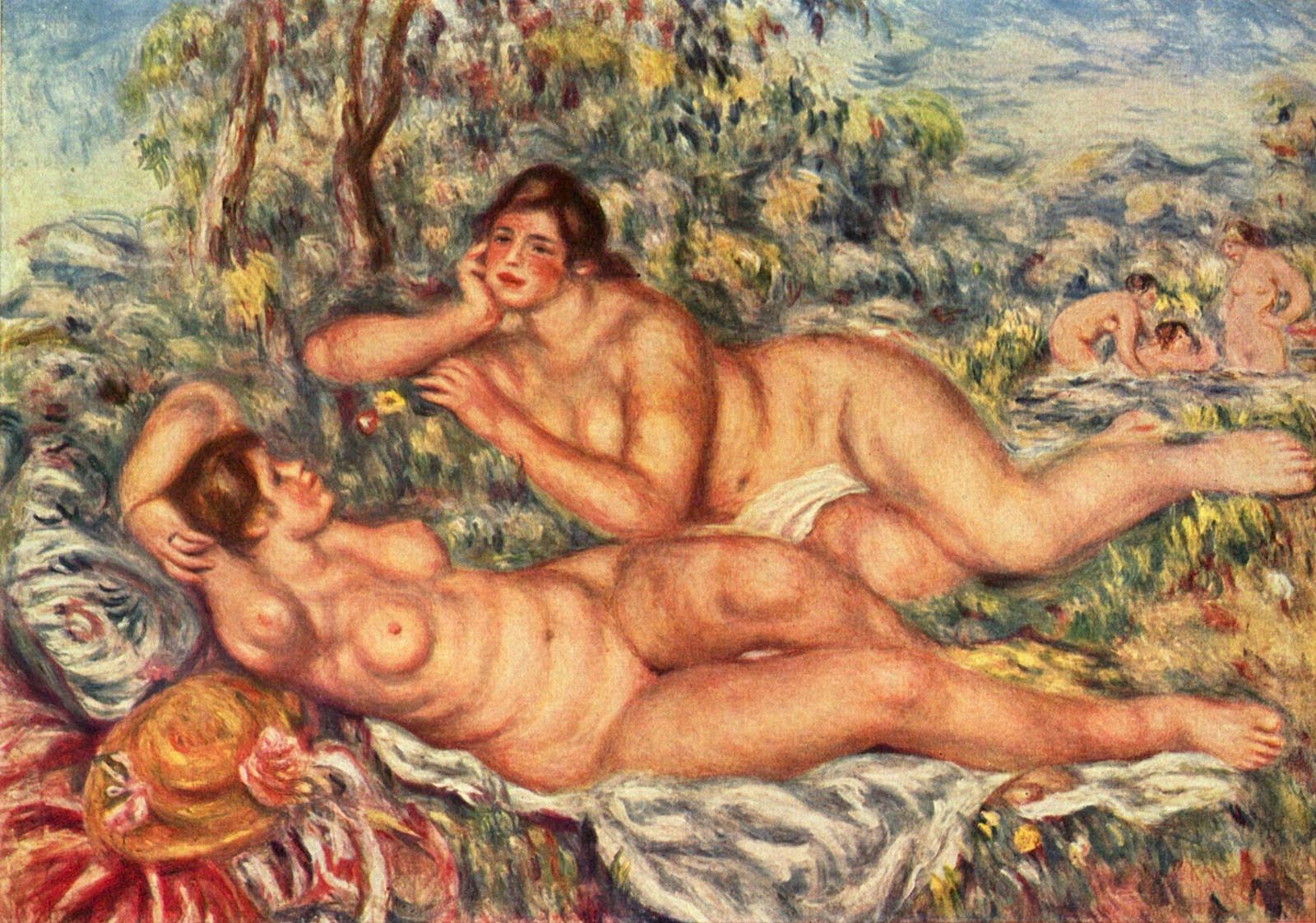The Calamity of Desire
Stories & Artists
"The Birthday of the Infanta"

Las Meninas by Diego Velasquez. 1656, oil on canvas. Museo del Prado, Madrid.
The sister of 17th century artist Diego Velásquez ponders the meaning of her brother's iconic painting Las Meninas as she is dying. Owned by the Prado in Madrid and written about by Foucault, Derrida and others, Las Meninas was the first work of art to depict the viewer's gaze as equal to the artist's. Is meaning created by the artist alone, the painting asks, or is it also in the eye of the viewer?
"The Beautiful Gaze"

Left: Madame X or Portrait of Madame X by John Singer Sargent. 1884, oil on canvas. The Metropolitan Museum of Art, New York City.
Right: Carnation, Lily, Lily, Rose by John Singer Sargent. 1885, oil on canvas. Tate Britian, London.
Right: Carnation, Lily, Lily, Rose by John Singer Sargent. 1885, oil on canvas. Tate Britian, London.
In "The Beautiful Gaze", based on the scandal that nearly destroyed the career of American Impressionist John Singer Sargent, the artist struggles to overcome his shame when Madame X, his portrait of a young socialite, is badly rejected at the Paris Salon of 1884. The story follows the rejection and his move from Paris to London, where he resurrects his career with a new painting Carnation, Lily, Lily Rose, owned by the Tate, London. Madame X is in the collection of The Metropolitan Museum of Art.
"The Calamity of Desire"

Posthumous Portrait of Ria Munk III by Gustav Klimt. 1917-18, oil on canvas. The Metropolitan Museum of Art, New York City.
The title story of the collection, "The Calamity of Desire," depicts the life of Ria Munk, a young Viennese woman at the turn of the last century, who commits suicide over a broken heart. "Men have died throughout history on the battlefield," says Ria, "medals lain across their graves, and why shouldn't a woman's death for love be equally esteemed?" As the painter Gustav Klimt attempts her death portrait, Ria's ghost narrates his efforts, relives her failed love affair, and comes to terms with her suicide. One of the works stolen by the Nazis, her painting now hangs in the Metropolitan Museum of Art. The story "The Calamity of Desire" (originally titled "The Death of Ria Munk") was nominated for a Pushcart Prize.
"Still Life with Cherries"

Still Life with Cherries, Strawberries and Gooseberries by Louise Moillon. 1630, oil on panel. The Norton Simon Museum, Pasadena, California.
"Still Life with Cherries" depicts the childhood and education of 17th century French Huguenot still life painter Louise Moillon, the first female painter to be admitted to the French Academy of Art and Science. The story traces the painter's youth and her struggle to become an artist against her mother's wishes, set against the Huguenot/Catholic conflict in France in the 17th century. This story is an excerpt from the author's novel The Remedy of Light.
"Roman Glass"

Glass jug, Roman, late 1st–2nd century CE. The Metropolitan Museum of Art, New York City.
To value and be valued is key," says Ruth, the protagonist of "Roman Glass," a middle-aged museum curator at a fictional museum in Brooklyn who collects antique Roman glass and invents the concept of the history of collecting. The short story follows the course of the ordinary events of her life, as Ruth discovers her own value and rediscovers love.
"Terminus"

Annah the Javanese by Paul Gauguin. 1893, oil on canvas. Private Collection.
"Terminus" is based on the life of 19th C sharpshooter Annie Oakley. Abused and enslaved as a child, she is saved by her iron will and gift with a gun. Now grown, she joins Buffalo Bill's troop in Paris for the opening of the Eiffel Tower where she encounters the artist Paul Gauguin and struggles to save one of his child models from the same fate. Inspired by the life of Annie Oakley and the painting Annah the Javanese by Paul Gauguin. Winner of the Hoepfner Literary Award for Best Story of the Year.
"Women Bathing - A Novella"

The Bathers by Auguste Renoir, 1918-1919. Oil on canvas. Musée D'Orsey, Paris.
In "Women Bathing", a coming-of-age novella set against the Dreyfus Affair and the birth of the modern age, a young artist comes to Paris to escape the pain of her husband's death and to follow her dreams. As her career progresses, she models for the aging painter Auguste Renoir, but only finds success when she faces her buried pain and stands-up to Renoir over his anti-Semitism. Based on the later works of Auguste Renoir and the Dreyfus Affair.
"Vermeer's Light"

Mistress and Maid by Johannes Vermeer. 1666-1667, oil. The Frick Collection, New York City.
In an artists' building in downtown Los Angeles, a painter and a married photographer share afternoon tea and their mutual attraction as they discuss Johannes Vermeer, a nearly forgotten artist in his lifetime. When an affair never materializes and the photographer gives up his loft, the painter consoles herself looking at a book on Vermeer's paintings and imagining the painter's life.
